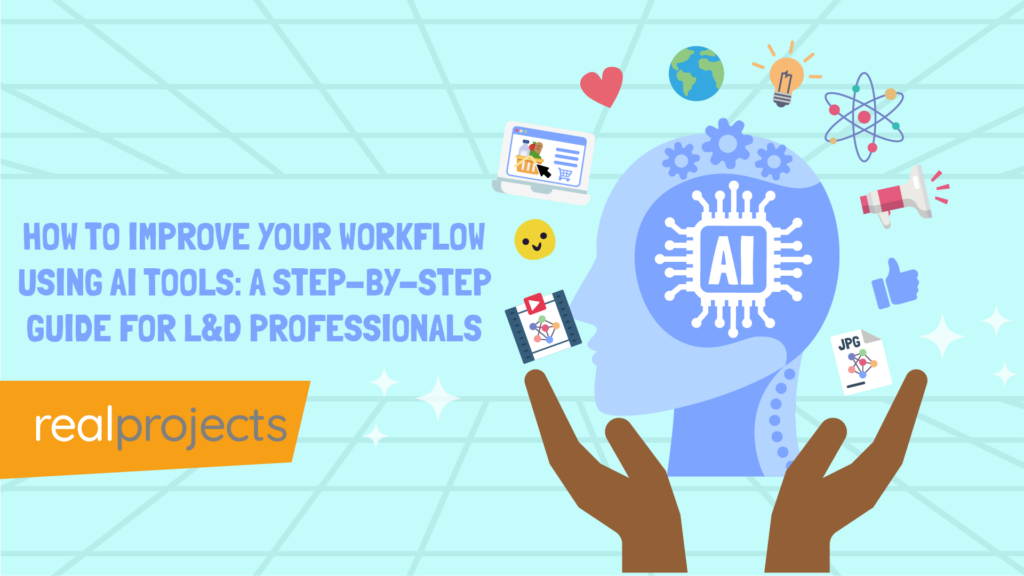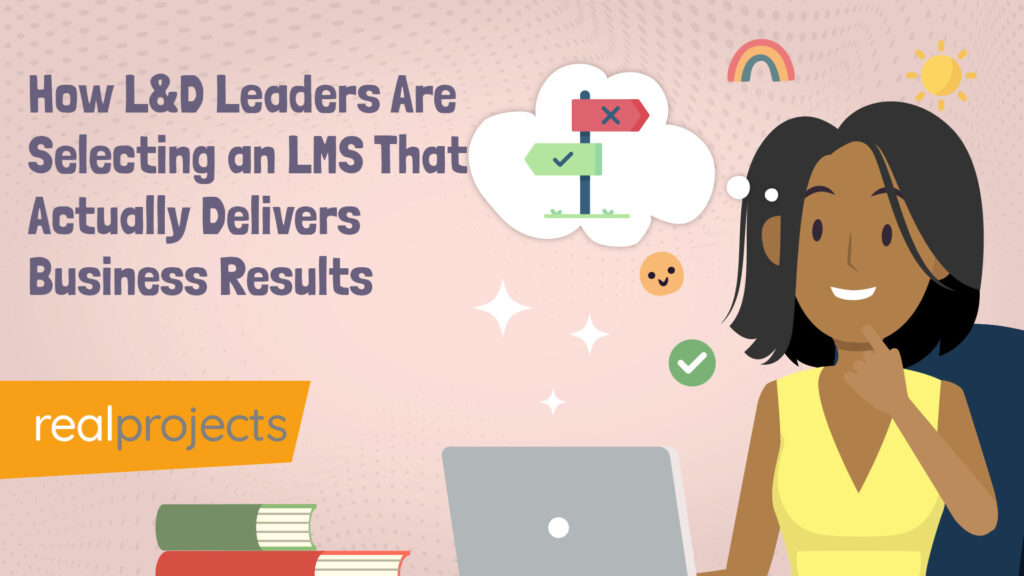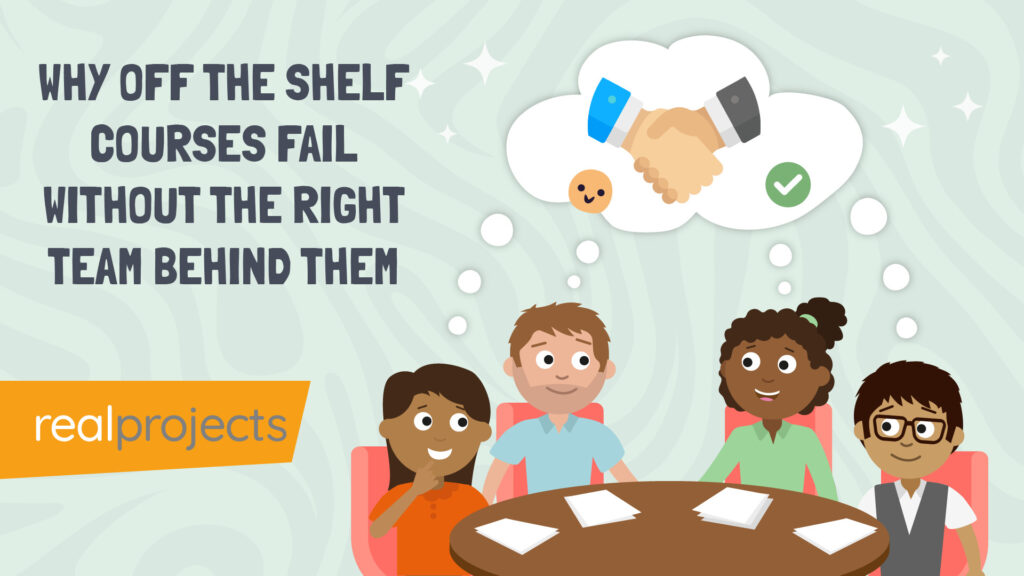Elearning, often called electronic or digital learning, is fast becoming a staple way of learning new skills or gaining additional qualifications.
Why?
Because so many more of us have access to electronic devices that facilitate online learning. And, because online learning provides an easier way for many of us to learn, reducing the cost and allowing us to learn whenever and wherever suits us best.
For those who are curious about the benefits of learning online or those who want to find out more about the importance of elearning, this article is for you. At Real Projects, we understand the transformative impact of elearning.
In this article we aim to share our insights with you, highlighting the reasons online learning is becoming a jewel in the crown of the education industry.
Accessible and Flexible Learning
One of the main reasons online learning has skyrocketed is its accessibility. If you can get your hands on an electrical device, even a mobile phone or tablet, you can learn online. It may seem incredulous to think you could gain a GCSE qualification via a handheld device, but if you want to learn, education is yours for the taking.
Accessibility means that you can learn from home too, and at your own leisure and pace. For those looking to access qualifications or master new skills, there may be priorities that prevent this learning from taking place during the day. Digital learning is available 24 hours a day. And when it’s available 24 hours a day, as much as it’s accessible, elearning’s also completely flexible.
You can learn when you want, at a pace that suits you. If you need to revisit concepts or modules, elearning offers you the opportunity to learn and relearn. Because the content is stored in a digital portal, you can access it easily and as many times as you like.
Whilst accessibility and flexibility are two of the major reasons elearning has reached more than 100 million learners, variety of course content is another. Much research has been carried out to maximise learner engagement and motivation, and online learning can include something for all types of learners. Multimedia options, interactive games and quizzes and adaptive content all combine to make online learning visually appealing and engaging. Thus creating content that leads to rich, deep and meaningful learning.
Another reason why elearning has become such an accessible phenomenon is that it is geographically boundless. As you collaborate on a group project, you could be screen sharing with a learner from another continent. Accessing materials from the best course provider rather than the nearest college or university is an option for all nowadays.
Engaging and Interactive Learning Experiences
It’s obvious that ease of access, flexibility and being able access content from anywhere around the globe has had an influencing factor on the elearning revolution. However, it’s fair to say that the engaging content itself has been as much of an influence.
Whether you’re accessing materials through electronic devices in a traditional class based setting, or you’re learning remotely, technology is a huge part of contemporary learning.
Why? Well, why not? Books still have their relevance and permanence in education, but nowadays, so does multimedia.
Learners can immerse themselves in multimedia elements, videos and simulations bring scenarios and concepts to life in a new and stimulating way. Animations are effective ways of teaching skills and concepts to learners too, both young and old, in early education and in further education.
Studies have shown that these learning elements combine to develop sharp critical-thinking skills and problem solving skills. Because animations, simulations and videos can replicate real life problems and difficulties, online learners are able to develop skills that transfer into the workplace and drive up professional confidence and the ability to react and respond to situations in the way you envisage as the business leader.
These days most of us use technology to learn, relax and entertain ourselves, it’s pretty much part of everyday life. And, in this respect, it can be used to hugely drive motivation and engagement in learners. Quizzes, assessments and collaborative learning can all be formatted to take place in an interactive way that we understand and find easy to use.
These gamification elements have been purposefully incorporated into online learning to ensure that audiences enjoy, understand and can interact easily with platform interfaces. The very same methods we use to unwind can help us to learn-it’s a way technology can infuse learning that traditional methods find much harder to penetrate.
Personalized Learning and Performance Tracking
One aspect of class based learning that you’d imagine is hard to recreate online is personalised learning. Educationalists are highly trained in the process of picking up on body language and facial expressions, in addition to viewing completed work, so they can assess where learners are at. But, believe it or not, elearning platforms can also facilitate this aspect of performance tracking. Whilst platforms can not yet read body language and facial expression, it can deliver personalised learning for participants.
Learning Management Systems (LMS) enable learning and engagement to be tracked. Content can be tailored to meet the specific needs of those involved in learning. For example, those struggling to complete assessments can be redirected to supplementary materials and those that enter modules with a high-level of skill or competence, can be provided with challenges to stretch their abilities.
In just the same way that learners progress can be tracked, so too can the effectiveness of course materials and resources. If analytics observe a lack of user engagement, learning content can be adapted or updated or revised completely. In this respect, the computer is able to think like a teacher and monitor learners’ response to what is being taught.
Sometimes learning is a necessity and perhaps not much treasured. Other times learning something new can unlock a desire to learn more and more and more. Online learning provides anyone accessing content the opportunity to reflect on their learning journey in the form of self-evaluation and self-assessment. Developing these skills inevitably leads individuals to know how they learn and perhaps most importantly, how they learn best.
So all in all, elearning courses are of significant importance and are now an established and proven feature of the current educational landscape. As we’ve explained, the reasons behind this are borne from the way technology connects personally with the learner to engage and motivate them to learn in depth.
Technology is proving itself a worthy tool that’s been embraced from early education to further education-and beyond. Online learning will find itself being used by more and more learners, whether they are learning a new skill or gaining an accredited qualification. And, it’s fair to say that in the coming years, online learning will continue to revolutionise learning in an inspiring and powerful way.



